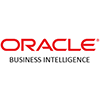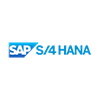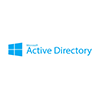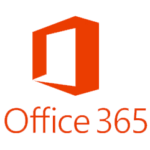Top Access Management Challenges and What You Can Do About Them!
Managing logical access to an organization’s network, systems, databases, and applications (“Access Management”) is increasingly becoming a complex challenge with serious downside risks if not done well. Access Management is critical as it helps ensure that sensitive information remains secure while allowing authorized users to access the resources needed to do their job. Further, several organizations also have regulatory obligations that increase the stakes for compliance with privacy, data protection, and security driven by robust and well-designed access controls that operate effectively over time.
Successfully addressing access management challenges is a balancing act that has, of late, necessitated the use of technology and automation to manage it cost-effectively at scale. Organizations must be fully aware of these challenges and opportunities to address the issue effectively. In this blog, we will explore some of the top access management challenges from our experience and how we have been helping our clients tackle them:
1. User Authentication: This is about ensuring that internal and external Users are who they claim to be. User Authentication mechanisms help achieve this. The traditional approach uses what the authorized or legitimate user “knows” – The password. However, MFA or Multi-Factor Authentication has become today’s default for most services due to the limitations of just having a password alone. It is based on an text message or a call to a smartphone, authentication application, biometrics (e.g., fingerprint, voice recognition, retina scan, face recognition), security questions, or via email as secondary sources of validating a User’s identity. Each MFA technique has strengths and weaknesses, offering different levels of security. MFAs can prove expensive to implement; hence, a business case weighing risks and benefits must be considered. Further, MFA adoption rates by users (e.g., in consumer accounts where MFA is rolled out as an option) can be lower than expected. Some organizations target specific applications holding sensitive data to MFA to mitigate some of these challenges. Many users view MFA as a nuisance, especially the older customer base. While the thoughtful rollout of MFA can help strong authentication, it should never provide a false sense of extra security. Other precautions and conventional authentication safeguards should not be forgotten.
2. Authorization enables user access to relevant applications and system resources as needed and is easier said than done. Once you’ve set up your authorizations based on your business’s unique needs, the challenge becomes maintaining and updating User changes (e.g., role changes, termination of users, etc.) in a timely manner. When using software as a service (SAAS applications), several applications are used, increasing access complexity. Each application of your organization has different password rules and expiration cycles. It reduces employee productivity and enhances user frustration because they need to spend much time remembering, resetting, and managing those passwords for all applications. Apart from this, reusing passwords or using obvious passwords create security risks. Employees who write down their passwords in Excel files or any laptop applications create a credential stuffing attack risk.
Inappropriate, excessive access and extended use of privileged access are large organizations’ major primary access management-related audit issues. As the problem grows in complexity with the new “WFA – work from anywhere” paradigm, using technologies such as automation and machine learning is the only way to get ahead of this challenge at scale. Affordable solutions are available to meet every organization’s budget today.
3. Insider Threats pose a significant risk to organizations, as employees with authorized access can easily compromise sensitive information inadvertently or sometimes deliberately. Organizations must have targeted access management capabilities to detect and prevent insider threats. Several surveys have indicated that many breaches happen because of insiders or recently terminated disgruntled employees. Hence this is an easy win if proactively addressed. Proactive measures to mitigate insider threats include the five steps: Define, Detect, Identify, Assess, and Manage. Threat detection and identification is the process by which persons who might present an insider threat risk due to their observable, concerning behaviours come to the attention of an organization, or insider threat team, for timely intervention and response. User and Entity Behaviour Analytics (UEBA) is one of the related techniques that is becoming more popular. UEBA is also more popularly known by its earlier iteration: User Behaviour Analytics (UBA) and involves gathering insights from the network events that users generate daily. Once collected and analyzed, patterns, the use of compromised credentials, lateral movement, and other malicious behaviour can all be evaluated and addressed.
4. Compliance management: Organizations in specific industries or sectors must also ensure that they comply with relevant laws and regulations, such as the Sarbanes Oxley Act, PCI/DSS (Payment Card Industry Data Security Standards), General Data Protection Regulation (GDPR) and the Health Insurance Portability and Accountability Act (HIPAA) to mention a few. Failure to comply with these regulations can result in severe penalties or other serious implications. Effective access management is required to achieve these compliance requirements. Organizations must ensure that their access management capabilities and controls are up-to-date and compliant. While in most organizations, regulatory compliance is the main driver for investment and enhancement of the access management controls we examined earlier, the art of the possible is to optimize the cost of compliance and enhance the value generated by the investment. Value maximization is achieved by streamlining security policies, control frameworks, standards, and processes to derive standardization benefits and maximize return on investment.
5. Integration with Other Systems: Integrating access management systems with all the relevant applications and systems that make up the extended perimeter of your organization (e.g., human resources, enterprise resource planning systems, legacy applications, corporate security, applications on the cloud, and third-party vendors) standardizes your platform and empowers your organization to gain more value from its existing systems. Integration is a complex challenge at many organizations, often with a multi-year implementation schedule. The good news is that recent platform capabilities offer quick and seamless integration.
6. Less centralized view in the system: Various organizations are moving from on-site to cloud-based data storage. Decentralizing your corporate data in this manner gives your organization’s different departments more freedom to access and share their data. Doing so has many upsides but it can create a dangerous risk in the Identity and Access Management (IAM) system. As the company moves from a centralized system to a decentralized system, the organization needs to incorporate decentralized identity access management processes for each department. When done effectively, decentralizing corporate data storage provides several IAM benefits, including improved security, enhanced privacy, simplified access management, increased scalability, and greater transparency.
Hopefully, an overview of the above challenges illustrates how effective Access Management can protect and bring value to your organization’s systems, data, and sensitive information.
The need for a strategic, integrated, automated, and AI-driven platform approach:
Organizations must take an integrated approach to manage sensitive information and systems access to address these challenges. Assessing what your organization needs to protect, where the risks lie, and what the regulatory/stakeholder obligations and expectations are, will clarify what is essential to your safe and effective operation. Such a thorough risk assessment drives policy, frameworks, standards, and processes. BAAR-IGA can help your organization establish a state-of-the-art platform that leverages and builds from what already exists.
Our platform offers “orchestration” and an “abstraction layer” between existing legacy systems and newer capabilities to ensure seamless integration. Once these are defined, the use of automation is vital for implementation. BAAR-IGA’s automation tools can be used to mechanize routine tasks, such as provisioning and de-provisioning access, reducing the risk of errors and improving the speed and efficiency of the process. Additionally, AI, and specifically Machine Learning, can be used to analyze and proactively address security threats.
Another key benefit of the BAAR-IGA “platform” approach is a unified view of all access permissions and controls. The platform allows organizations to manage access rights and permissions across multiple systems and applications, reducing the risk of unauthorized access and simplifying the management of access policies.
Using advanced technologies (AI and automation) of BAAR-IGA, the access management team of your organization will get access to keep track of the credentials. The SaaS management platform provides a centralised view of the SaaS applications of your organization. Integrating the Single Sign-On process plays a vital role in collecting directory information and identifying the list of applications of a User. If a User wants unauthorized access to an application, this information is also forwarded to the administration group.
Ultimately, an integrated approach to access management should focus on what matters most to the organization: protecting sensitive information and systems from unauthorized access. By leveraging platforms, automation, and AI technologies, organizations can streamline their access management processes, reduce risk, and improve security while freeing up valuable resources to focus on other essential tasks.
Allow BAAR Technologies to assess your existing systems, identify opportunities and quick wins, and develop a roadmap to your Identity Security & Controls Transformation!













